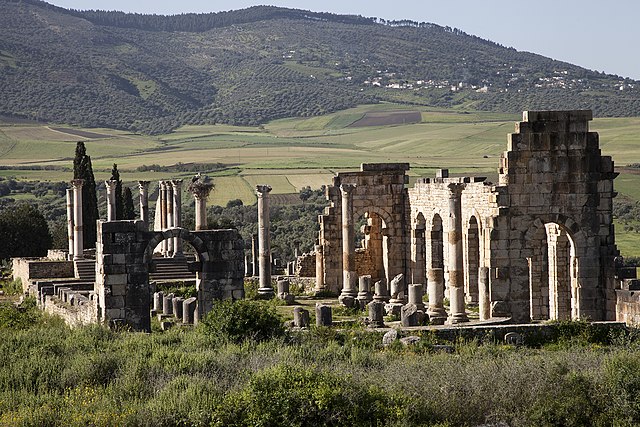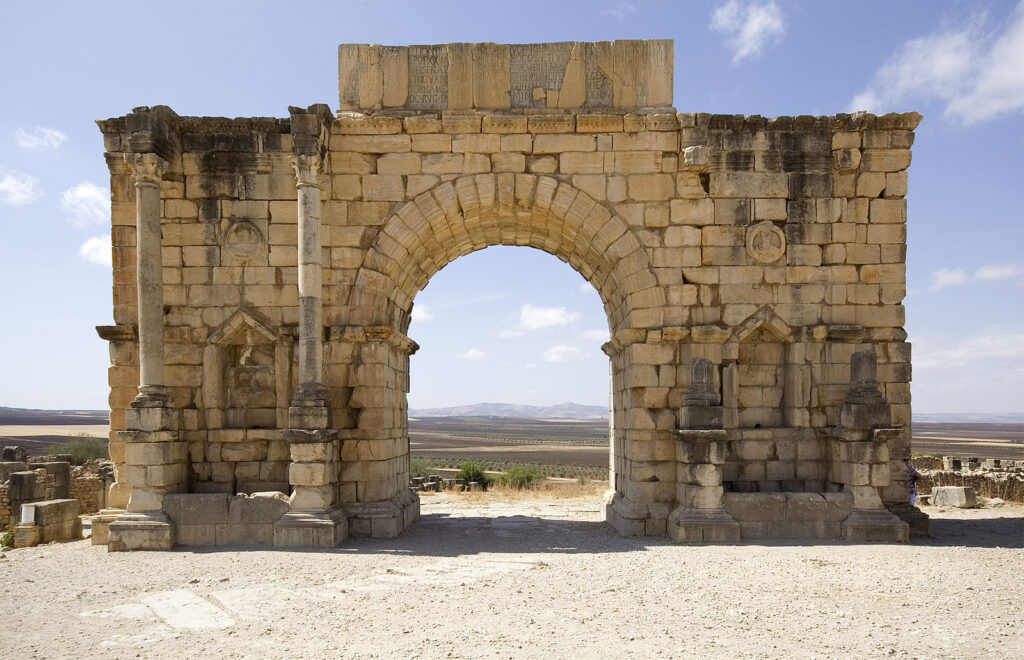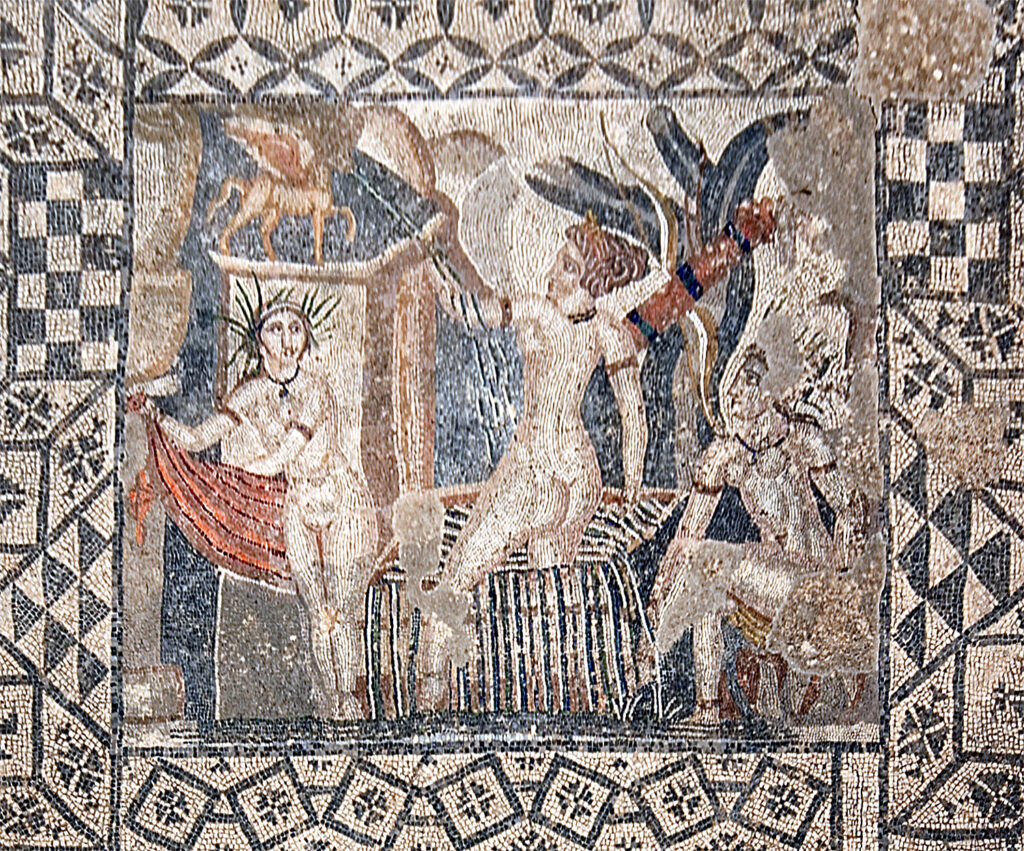Morocco’s Roman Relics: A Glimpse into Ancient Civilization

By: Maryem Bouatlaoui / Arab America Contributing Writer
Nestled amidst the diverse landscapes of Morocco lie the remnants of an ancient civilization that once thrived in the heart of North Africa: the Roman ruins. Embark on a captivating journey through history, discovering the stories behind Morocco’s Roman ruins, which showcase the intricate connections between distant lands and civilizations.
The Grand City of Volubilis
Volubilis, colloquially called Walili, is one of the many impressives Roman architectural sites in Morocco. The city of Volubilis is arguably Morocco’s largest and most remarkable Roman historical site, located near the city of Fes. According to historians, Volubulis was first built by the Imazighen people, indigenous North Africans, and, due to its fertile agricultural land, became the capital of the kingdom of Mauretania. In the first century, under Roman rule, Volubilis expanded vastly across the mountains of Zerhoun, making it one of the strongest cities due to its altitude.
Despite the centuries that have aged the city of Volubilis, its remains still reflect its ancient grandiose. Volubulis houses a wide range of Roman architectural structures, from intricate mosaics to triumphal arches to luxurious mansions. One of the most famous and visible buildings in Volubilis is the Capitoline Temple, designed under the reign of Roman Emperor Macrinus as a tribute to the three gods Jupiter, Juno, and Minerva. During the Roman era, the Capitoline Temple served as a gathering spot for locals and officials to celebrate war successes and a place of worship for the Roman gods and goddesses. In addition to the Capitoline Temple, Volubilis is also home to the towering triumphal Arch of Caracalla. The structure was built in the 3rd century to honor the Roman emperor Caracalla and his mother, Julia Domna, and the arch still retains Roman inscriptions and illustrations of the emperor and his mother.

Volubilis’ most notable feature is its intricate mosaics, adorning the archaeological site. The mosaics include various symbols and animals including trees, birds, dolphins, and horses. Some mosaics also portray images from legends about Roman gods and goddesses such as Bacchus, Actaeon, Ephebe, etc. During the excavations of Volubilis, mosaics were mainly found at the entrances of mansions and palaces. Today, most of the mosaics remain visible, depicting wondrous remnants of Roman artistry.

Volubilis was registered as a UNESCO World Heritage Site in 1997 and is cited as “an exceptionally well preserved example of a large Roman colonial town on the fringes of the Empire.” Numerous universities and institutions including the University College of London, the University of Wisconsin-Madison, and the University of Notre Dame have conducted field research and studies on the architectural site.
Lixus in Larrache
The ancient city of Lixus is situated in Northern Morocco off the shores of modern-day Larrache. Lixus was initially settled by the Phoenicians in the 7th century BC. During the Punic Wars, the Phoenicians lost the city of Lixus to the Romans along with territories in Mogador and Chellah. Under Roman rule, the city of Lixus became an outpost of the Roman province of Mauretania Tingitana. Strategically situated in Northern Morocco, Lixus rapidly became the largest and most important city in the Mediterranean region. The city was known for its economic prosperity, close proximity to the sea, and evolutionary architecture.
While most of the architecture has weathered over the years, remains of temples, aqueducts, and sculptures remain in the city of Lixus. One of the remains in Lixus is an amphitheater said to have been influenced by the Roman Colosseum. Many temples are scattered across Lixus in the names of Roman gods and goddesses such as Juno, Jupiter, Asclepius, and Minerva.
The city of Lixus was modernly discovered in 1948 by a Moroccan-French team of archaeologists. Following the discovery of the city of Lixus, historians and academics traced the historical timeline of the city of Lixus. The Ministry of Culture and Communication also launched and invested millions of dollars in numerous restoration and tourist projects. On July 1st, 1995, UNESCO added Lixus to the UNESCO World Heritage tentative list.
The echoes of the Roman Empire resonate all throughout the nation of Morocco, reminding us of the centuries of globalization and cultural expansion. Immersion in the realm of antiquity reveals the allure surrounding Morocco’s Roman ruins. These awe-inspiring architectural remnants offer not only a captivating glimpse into a bygone era but also stand as poignant testaments to the interplay of cultures shaped by the course of humanity.
Check out Arab America’s blog here!









